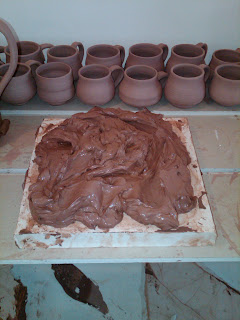A clean wheel and tools.
Fresh bag of stoneware clay from my local purveyor. I ran holes into the block of clay maybe two weeks ago and poured water into them and over the clay then resealed it. Now after a little wedging it is softer and easier to work with than what comes right out of the bag. I'm looking for natural local clay to experiment with. More on that after the ground thaws.
Lumps for the wheel, waiting for me to get off the computer.


























